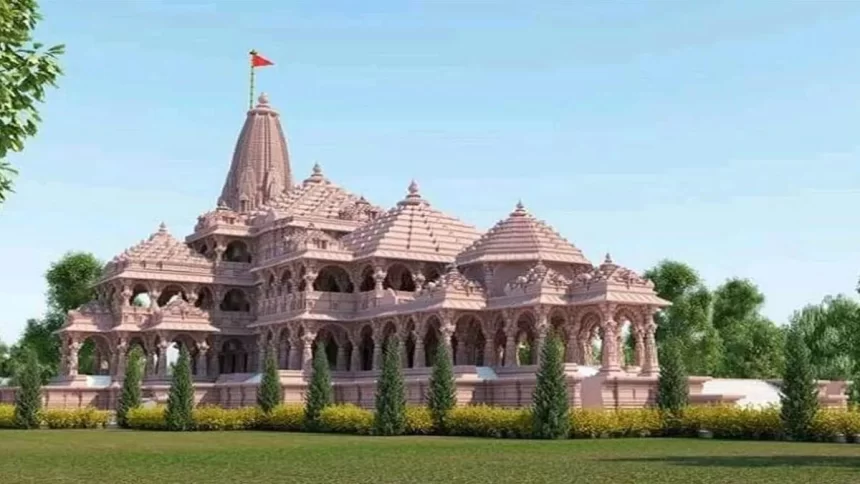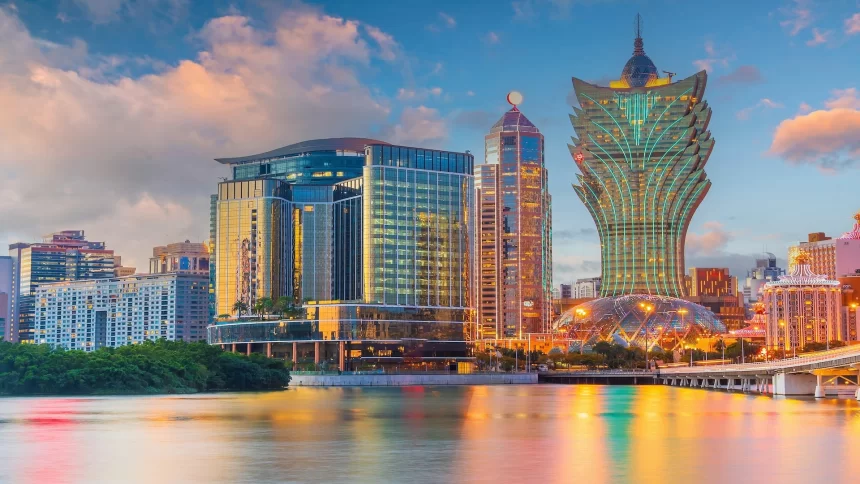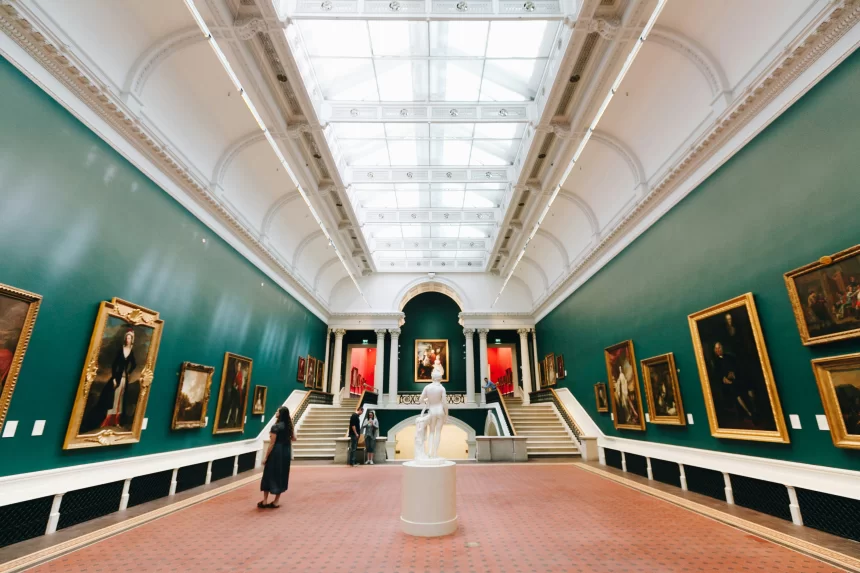Top 7 Most Visited Tourist Places in India
Discover India's top 7 tourist destinations! Explore attractions, weather, transport, and why Ayodhya, Varanasi, Agra & more are must-visit.

Top 7 Most Visited Tourist Destinations in India
India, a land of diverse cultures, historical landmarks, and natural wonders, welcomed over 64.9 crore domestic tourists and 22.7 lakh foreign tourists in 2024, reflecting a significant surge in tourism. The following destinations stand out as the most visited in India over the past two years, based on recent data from sources like the Ministry of Tourism and travel platforms. This article delves into the top seven destinations: Ayodhya, Varanasi, Mathura, Agra, Jaipur, Goa, and Delhi, covering their weather, popular months, key attractions, airports, local transportation, tourist facilities, and reasons for their immense popularity.
1. Ayodhya, Uttar Pradesh
Visitor Numbers: Approximately 16.4 crore domestic visitors in 2024.
Why It’s Popular: Ayodhya, revered as the birthplace of Lord Rama, has seen a massive tourism boom following the inauguration of the Ram Mandir in January 2024. Its spiritual significance and improved infrastructure make it a top pilgrimage and cultural destination.
Weather
- Climate: Subtropical, with hot summers (March-June, 30-45°C), monsoon season (July-September, 25-35°C with heavy rainfall), and mild winters (November-February, 10-25°C).
- Best Months to Visit: October to March, when cooler weather facilitates comfortable temple visits and outdoor exploration.
Key Attractions
- Ram Mandir: A grand temple dedicated to Lord Rama, drawing millions for its architectural beauty and spiritual aura.
- Hanuman Garhi: A hilltop temple dedicated to Lord Hanuman, offering panoramic views.
- Saryu River Ghats: Ideal for spiritual rituals and evening aarti ceremonies.
- Kanak Bhawan: A historic temple showcasing intricate architecture.
Airports
- Maharishi Valmiki International Airport (AYJ): Ayodhya’s new international airport, operational since 2023, located 15 km from the city center.
- Alternate Airports: Lucknow’s Chaudhary Charan Singh International Airport (LKO), 135 km away, or Varanasi’s Lal Bahadur Shastri Airport (VNS), 200 km away.
Local Transportation
- Auto-rickshaws and Cycle-rickshaws: Affordable and widely available for short distances.
- Taxis and Cabs: Apps like Ola and Uber operate, alongside local taxis.
- Buses: Uttar Pradesh State Road Transport Corporation (UPSRTC) buses connect Ayodhya to nearby cities.
- E-rickshaws: Eco-friendly option for navigating crowded temple areas.
Tourist Facilities
- Accommodation: Ranges from budget guesthouses (₹500-1000/night) to mid-range hotels like Ramada Encore.
- Dining: Local eateries serve vegetarian dishes like puri-sabzi and sweets like peda. Few restaurants offer North Indian cuisine.
- Tourist Services: Guided temple tours, multilingual signboards, and tourist information centers near Ram Mandir.
- Safety: Safe for pilgrims, with enhanced security around religious sites; petty theft precautions advised in crowded areas.
Popularity Reasons
The consecration of the Ram Mandir has catapulted Ayodhya’s status as a spiritual hub. Improved connectivity via the new airport and highways, coupled with government initiatives like “Visit India Year 2023,” has made it accessible to domestic and international pilgrims. Its cultural significance in Hinduism and vibrant festivals like Deepotsav draw millions.
2. Varanasi, Uttar Pradesh
Visitor Numbers: Approximately 11 crore domestic and 3.1 lakh foreign visitors in 2024.
Why It’s Popular: As one of the world’s oldest living cities and Hinduism’s spiritual capital, Varanasi attracts pilgrims and tourists for its sacred ghats, temples, and Ganga Aarti.
Weather
- Climate: Subtropical, with hot summers (March-June, 30-42°C), humid monsoons (July-September, 25-35°C), and pleasant winters (November-February, 10-25°C).
- Best Months to Visit: October to March, ideal for ghat visits and festivals like Dev Deepawali.
Key Attractions
- Kashi Vishwanath Temple: A Jyotirlinga shrine, central to Hindu worship.
- Dashashwamedh Ghat: Famous for the mesmerizing Ganga Aarti.
- Sarnath: A Buddhist pilgrimage site where Buddha delivered his first sermon.
- Manikarnika Ghat: A significant cremation ghat, symbolizing the cycle of life.
Airports
- Lal Bahadur Shastri International Airport (VNS): Located 26 km from the city, serving domestic and international flights.
Local Transportation
- Auto-rickshaws and Cycle-rickshaws: Common for navigating narrow lanes.
- Boats: Essential for ghat tours and river cruises on the Ganges.
- Taxis and Ride-Hailing: Ola, Uber, and local taxis are available.
- Buses: UPSRTC buses connect Varanasi to nearby cities.
Tourist Facilities
- Accommodation: Budget hostels, heritage havelis, and luxury hotels like Taj Ganges.
- Dining: Local cuisine includes kachori, lassi, and Banarasi paan; international options are limited.
- Tourist Services: Boatmen offer guided ghat tours, and English-speaking guides are available at major sites.
- Safety: Safe, but caution is needed in crowded ghats to avoid pickpocketing.
Popularity Reasons
Varanasi’s spiritual allure, with its ancient temples and ghats along the Ganges, draws devotees and cultural explorers. Its proximity to Sarnath attracts Buddhist pilgrims, while events like Ganga Mahotsav enhance its global appeal. The city’s unique blend of spirituality and tradition makes it a must-visit.
3. Mathura, Uttar Pradesh
Visitor Numbers: Approximately 9 crore domestic visitors in 2024.
Why It’s Popular: Known as the birthplace of Lord Krishna, Mathura is a major pilgrimage center, especially during festivals like Janmashtami.
Weather
- Climate: Subtropical, with hot summers (March-June, 30-45°C), monsoons (July-September, 25-35°C), and mild winters (November-February, 10-25°C).
- Best Months to Visit: October to March, particularly during Holi and Janmashtami for vibrant celebrations.
Key Attractions
- Shri Krishna Janmabhoomi Temple: Believed to be Krishna’s birthplace, a key pilgrimage site.
- Vishram Ghat: A serene spot for rituals and evening aarti.
- Govardhan Hill: Associated with Krishna’s legends, popular for parikrama (circumambulation).
- Barsana: Nearby town famous for Radha Rani Temple and Lathmar Holi.
Airports
- Closest Airport: Indira Gandhi International Airport (DEL), 150 km away in Delhi. A new airport in Jewar (Noida) is under development, expected to reduce travel time.
- Alternate: Agra’s Pandit Deen Dayal Upadhyay Airport (AGR), 60 km away, with limited connectivity.
Local Transportation
- Auto-rickshaws and Cycle-rickshaws: Ideal for short distances and temple visits.
- Taxis: Available for day trips to nearby Vrindavan and Govardhan.
- Buses: UPSRTC buses connect Mathura to Delhi, Agra, and Vrindavan.
- E-rickshaws: Popular for eco-friendly local travel.
Tourist Facilities
- Accommodation: Budget lodges, dharamshalas, and mid-range hotels like Brijwasi Royal.
- Dining: Vegetarian fare like peda, kachori, and chaat dominate; limited non-vegetarian options.
- Tourist Services: Local guides for temple circuits, basic tourist information centers.
- Safety: Safe for pilgrims, with police presence during festivals; crowded areas require vigilance.
Popularity Reasons
Mathura’s association with Lord Krishna and its vibrant festivals attract millions of devotees. Its proximity to Delhi and Agra, part of the Golden Triangle, makes it accessible for tourists combining spiritual and cultural itineraries.
4. Agra, Uttar Pradesh
Visitor Numbers: Approximately 14.6 lakh foreign visitors and millions of domestic tourists in 2024.
Why It’s Popular: Home to the Taj Mahal, a UNESCO World Heritage Site and one of the Seven Wonders of the World, Agra is a global tourism icon.
Weather
- Climate: Subtropical, with hot summers (March-June, 30-45°C), humid monsoons (July-September, 25-35°C), and pleasant winters (November-February, 10-25°C).
- Best Months to Visit: October to March, ideal for visiting the Taj Mahal at sunrise or sunset.
Key Attractions
- Taj Mahal: A stunning white marble mausoleum built by Shah Jahan for Mumtaz Mahal.
- Agra Fort: A UNESCO site with Mughal architecture, including the Jahangir Mahal.
- Fatehpur Sikri: A historic walled city with structures like Buland Darwaza.
- Mehtab Bagh: Offers scenic views of the Taj Mahal across the Yamuna River.
Airports
- Pandit Deen Dayal Upadhyay Airport (AGR): 8 km from the city, with limited domestic flights.
- Alternate Airports: Delhi’s Indira Gandhi International Airport (DEL), 230 km away, or Lucknow’s airport (LKO), 300 km away.
Local Transportation
- Metro: Agra Metro, operational since 2024, connects key sites like the Taj Mahal and Agra Fort.
- Auto-rickshaws and Cycle-rickshaws: Affordable for short distances.
- Taxis and Ride-Hailing: Ola, Uber, and private taxis for city tours and day trips.
- Buses: UPSRTC buses link Agra to Delhi, Jaipur, and Mathura.
Tourist Facilities
- Accommodation: From budget guesthouses to luxury hotels like Oberoi Amarvilas.
- Dining: Local specialties like petha and Mughlai cuisine; international restaurants available.
- Tourist Services: Licensed guides, audio guides at monuments, and e-ticketing for the Taj Mahal.
- Safety: Safe, with dedicated tourist police; avoid unofficial guides to prevent scams.
Popularity Reasons
The Taj Mahal’s global fame as a symbol of love ensures Agra’s place on every traveler’s itinerary. Its inclusion in the Golden Triangle (Delhi-Agra-Jaipur) and excellent connectivity via highways and the new metro enhance accessibility.
5. Jaipur, Rajasthan
Visitor Numbers: Approximately 9 million visitors in 2024.
Why It’s Popular: Known as the Pink City, Jaipur’s royal heritage, vibrant markets, and UNESCO-listed forts make it a cultural hotspot.
Weather
- Climate: Semi-arid, with hot summers (March-June, 30-40°C), monsoons (July-September, 25-35°C), and mild winters (November-February, 10-25°C).
- Best Months to Visit: October to March, ideal for sightseeing and festivals like Diwali.
Key Attractions
- Amber Fort: A majestic hilltop fort with stunning architecture and a light show.
- Hawa Mahal: The iconic “Palace of Winds” with its pink sandstone facade.
- City Palace: A royal complex with museums and courtyards.
- Jantar Mantar: A UNESCO-listed astronomical observatory.
Airports
- Jaipur International Airport (JAI): 13 km from the city, well-connected to major Indian and international cities.
Local Transportation
- Metro: Jaipur Metro connects key areas like Mansarovar to Badi Chaupar.
- Auto-rickshaws and Cycle-rickshaws: Common for short trips.
- Taxis and Ride-Hailing: Ola, Uber, and private taxis for city tours.
- Buses: Rajasthan State Road Transport Corporation (RSRTC) buses for local and regional travel.
Tourist Facilities
- Accommodation: Heritage hotels like Rambagh Palace, budget hostels, and mid-range options.
- Dining: Rajasthani thalis, street food like pyaaz kachori, and international cuisine.
- Tourist Services: Guided tours, multilingual signage, and tourist information centers.
- Safety: Safe, with tourist police; caution advised in crowded markets.
Popularity Reasons
Jaipur’s royal history, vibrant culture, and proximity to Delhi and Agra make it a key part of the Golden Triangle. Its colorful festivals, markets, and luxury heritage stays attract both domestic and international tourists.
6. Goa
Visitor Numbers: Approximately 10 million visitors in 2024.
Why It’s Popular: Goa’s pristine beaches, vibrant nightlife, and Portuguese heritage make it India’s party and relaxation capital.
Weather
- Climate: Tropical, with hot summers (March-May, 25-35°C), heavy monsoons (June-September, 25-30°C), and pleasant winters (November-February, 20-30°C).
- Best Months to Visit: November to February, ideal for beach activities and festivals like Sunburn.
Key Attractions
- Baga and Calangute Beaches: Popular for water sports and nightlife.
- Dudhsagar Falls: A stunning four-tiered waterfall.
- Basilica of Bom Jesus: A UNESCO site with Baroque architecture.
- Fort Aguada: A 17th-century Portuguese fort with scenic views.
Airports
- Manohar International Airport (GOX): In Mopa, North Goa, and Dabolim Airport (GOI): In South Goa, both serving domestic and international flights.
Local Transportation
- Taxis and Bike Rentals: Widely available; bikes are popular for exploring.
- Buses: Kadamba Transport Corporation runs local and intercity buses.
- Auto-rickshaws: Common for short distances, though fares need negotiation.
- Ferries: Connect coastal areas and islands.
Tourist Facilities
- Accommodation: Beach shacks, budget hostels, and luxury resorts like Taj Exotica.
- Dining: Seafood, Goan curries, and international cuisine at beach shacks and restaurants.
- Tourist Services: Water sports operators, guided tours, and ample signage.
- Safety: Safe, but caution advised at crowded beaches and nightlife areas.
Popularity Reasons
Goa’s laid-back vibe, beaches, and vibrant nightlife attract party-goers and families alike. Its Portuguese-influenced culture, festivals like Christmas and Sunburn, and affordability make it a year-round favorite.
7. Delhi
Visitor Numbers: Approximately 15 million visitors in 2024.
Why It’s Popular: As India’s capital, Delhi blends ancient history with modernity, offering iconic monuments, vibrant markets, and diverse cuisine.
Weather
- Climate: Subtropical, with hot summers (March-June, 30-45°C), monsoons (July-September, 25-35°C), and cool winters (November-February, 5-25°C).
- Best Months to Visit: October to March, ideal for sightseeing and outdoor activities.
Key Attractions
- Red Fort: A UNESCO-listed Mughal fortress with historical significance.
- India Gate: A war memorial and popular gathering spot.
- Qutub Minar: A UNESCO site, the tallest brick minaret in the world.
- Lotus Temple: A Bahá’í House of Worship known for its unique architecture.
Airports
- Indira Gandhi International Airport (DEL): One of India’s busiest, handling over 70 million passengers annually.
Local Transportation
- Delhi Metro: Extensive network covering 348 stations, ideal for tourists.
- Auto-rickshaws and Taxis: Ola, Uber, and traditional taxis are widely available.
- Buses: Delhi Transport Corporation (DTC) operates city and intercity buses.
- Cycle-rickshaws: Common in Old Delhi’s narrow lanes.
Tourist Facilities
- Accommodation: From budget hostels to luxury hotels like The Leela Palace.
- Dining: Street food like chaat, Mughlai cuisine, and global restaurants.
- Tourist Services: Audio guides at monuments, hop-on-hop-off buses, and tourist helplines.
- Safety: Safe, with tourist police; caution needed in crowded markets like Chandni Chowk.
Popularity Reasons
Delhi’s historical landmarks, cultural diversity, and role as a gateway to North India drive tourism. Its world-class infrastructure, museums, and events like Republic Day celebrations attract global visitors.
Conclusion
India’s top seven tourist destinations, Ayodhya, Varanasi, Mathura, Agra, Jaipur, Goa, and Delhi, offer a rich tapestry of spirituality, history, and leisure. From Ayodhya’s sacred Ram Mandir to Goa’s vibrant beaches, these places cater to diverse traveler interests. Enhanced connectivity, e-Visa facilities, and government initiatives like reduced GST on hotels have boosted accessibility. Plan your visit during the recommended months, utilize efficient local transport, and immerse yourself in India’s unparalleled cultural and natural splendor.





















